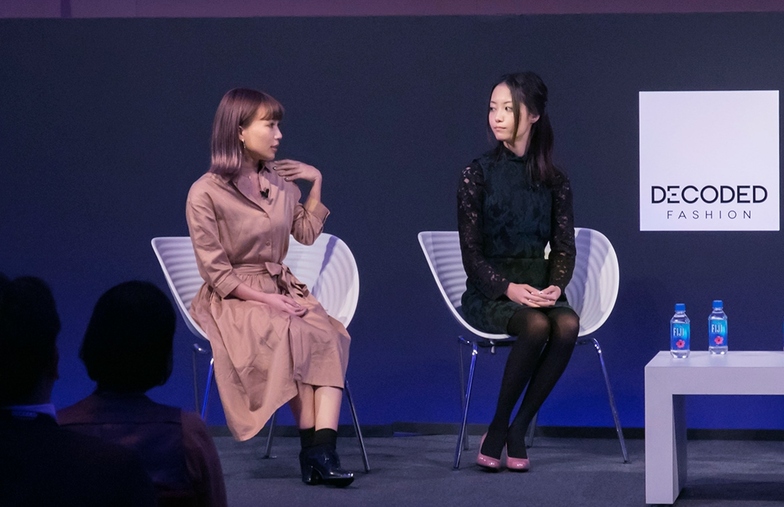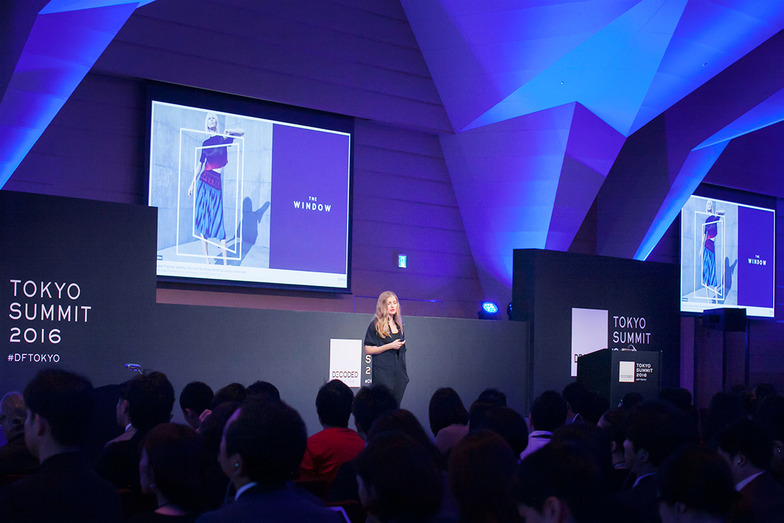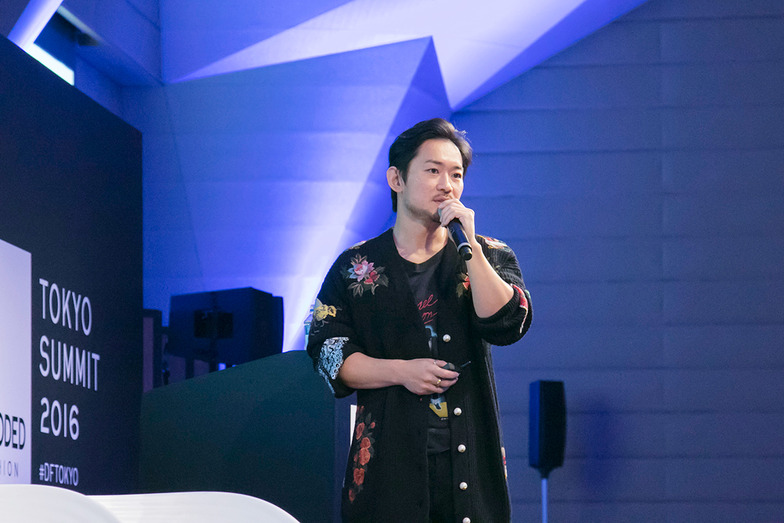Note: This website was automatically translated, so some terms or nuances may not be completely accurate.
Report: DECODED FASHION Tokyo Summit 2016

Hello. I'm U, your DECODED FASHION navigator. On October 11th, the DECODED FASHION Tokyo Summit 2016 took place. This year's theme was "The Future of Luxury Experiences." Fashion and technology experts from Japan and abroad presented global case studies and debated the essence of fashion. This edition of NEW RULES OF LUXURY features a report from the event, concluding with my own reflections.
Luxury Brands Must Reexamine Their Relationship with Society
"The Japanese market holds tremendous potential for luxury online sales." This assertion came from José Neves, founder of Farfetch, the first speaker of the day. Farfetch is an e-commerce platform that doesn't hold inventory itself, instead delivering goods from brand stores in 190 countries to customers in 35 countries. The key point where they see opportunity in Japan lies in the low e-commerce adoption rate. While the percentage of high-end purchases made via e-commerce is 12% in the US and 10% in the UK, it stands at only about 1.5–2.5% in Japan, indicating substantial room for growth. Furthermore, they note that the average time spent browsing sites in Japan is longer than in other countries.
However, in today's climate where goods are said to be hard to sell, SIMONE.INC. CEO Kaie Murakami, speaking with WIRED Japan Editor-in-Chief Megumi Wakabayashi, analyzed the current situation: "From 1990 to 2015, domestic apparel production growth was 3.5%, while consumption was only 1.2%. Brands, stores, and products all continue to face an oversupply situation." He added, "With more choices available now, dressing up in expensive items is no longer seen as cool," a sentiment echoed by Wakabayashi: "Brands need to reevaluate their relationship with society before focusing on consumers."

Mr. Murakami cited the history of luxury houses—originally saddlers—shifting to bags and scarves as automobiles transformed society as an example of innovation. "This change signifies not merely a shift in transportation, but the emergence of new spaces within society," he explained. Responding to Murakami's view that "with technological evolution, what we are now seeking to grasp is an unprecedented virtual space," Wakabayashi emphasized, "It's wise to start trial and error now for the major transformation looming in three or four years. In the future, the value a brand provides might not even be fashion anymore."
Participating in the conversation titled "Generation Z's True Feelings" were Hayakawa Gomi and Kamada Arisa, who symbolize Japan's millennial generation. Their discussion also highlighted that for young people, luxury does not equate to high-priced goods. As Hayakawa stated, "The true appeal of luxury lies in the brand's wisdom received through the shopping experience." Meanwhile, Kamata, who shares information about the production background and sustainability of fashion items, stated, "The value lies in the trust we feel in the story behind the process and environment in which brand products are made."

So, what specific value are the world's leading brands demonstrating to society? The panel discussion titled "Smart Retailing: Sincerity and Responsibility" was brimming with hints for the future.
The three speakers, who run innovative fashion businesses in Europe, began the session by screening trailer videos symbolizing their respective ventures. Christopher Raeburn's video, introducing his concept of repurposing military fabrics, clearly conveyed a sense of mission toward sustainability. The story conveyed by knitwear brand UNMADE is technology itself. It offers an editable e-commerce experience where customers can design product colors and patterns on the site, while also sharing the manufacturing background of 3D knits with them. The shoppable online magazine SEMAINE weaves a short story that completely transforms the site's layout each week. It employs different influencers depending on the featured brands and products, appealing to specific target audiences. While the intent and approach of their storytelling vary, their shared brand mission crystallized in Christopher Reber's statement: "Telling your brand's authentic story using contemporary methods."
Nakayaman, CEO of Dressing, a fashion-specialized creative agency, presented on SNS strategy. He offered an optimistic outlook for the future of luxury fashion, citing two key reasons: the vast archive of assets backed by history, and the close relationship with contemporary art. Contemporary art has a high affinity with technology. Nakayaman suggested a future strategy, stating, "Luxury brands should already have stories to tell," and adding, "Digital technology exists to help with complex communication."
John Stein, Global General Manager of Intel's Retail Division, says that what luxury brands need going forward is "to analyze data and uncover customer insights." To uncover customer insights, he says it is important to first analyze online data and behavioral data from physical stores to understand the process leading up to a purchase, why a purchase was made or not made, and why that brand was chosen. In the future, the amount of data that can be acquired through IoT will expand. He concluded that brands that can utilize all data to gain customer insights and provide the optimal shopping experience will be the winners after 2020.
The keywords are personalization, community, and chameleon!
Katie Barron of STYLUS, an innovation consulting firm bridging technology and retail in the US and UK, stated, "To unravel the future of luxury, we must start by examining Generation Z, the future customers."

Millennials were born into an unstable and uncertain society, making it difficult for them to feel confident. To appeal to them, technology that provides personalized information based on users' location data and behavior is effective. Baron also highlighted concierge services. She introduced examples like Sephora, where customers can interact with real staff, and THE NORTH FACE's collaboration with IBM Watson. In every case, she emphasized that the key points are providing highly personalized content and making consumers feel they are in control of the brand's suggestions.
Generations Z and Y expect brands to offer services that connect people. British cosmetics shop Blusher created a platform where paid influencers can share makeup images. Through regularly held contests, they successfully fostered not only a sense of belonging among users but also a tangible feeling of personal growth. Sports brands also excel at building communities for people with shared interests. NIKE+ also creates spaces for runners and skaters to connect. For example, it established a skate park in Brooklyn, New York, where users share performance videos captured via the app and compete on tricks. The brand combines this with the aforementioned personalization technology to provide individual users with recommendations and e-commerce.
Baron refers to millennials as chameleon-like consumers. They seem to possess a trait where they seek a sense of belonging while simultaneously rejecting categorization. This stems from a psychology shaped by an uncertain society: they cannot promise the future, they want to freely repaint their identity, and they don't want to appear on social media wearing the same clothes. This is where luxury item rental services are rising. Good examples include Rent the Runway, which lets users rent three items monthly for a flat fee, and Couture Collective, where you can rent the latest collections from high-end fashion houses at 20% of the retail price.
Hayakawa Gomi and Kamata Arisa, young entrepreneurs known as influencers, articulate the voice of Japan's Generation Z. Regarding her relationship with social media, Hayakawa states, "Because of my niche interest in Lolita fashion, I've actively used social media since my student days. I make sure to only share information that won't betray the trust of my core fans." Kamata also stated, "If you carefully filter your posts, it leads to a higher hit rate. Young people who are exposed to vast amounts of information daily have also honed their selection skills."
Influencers as Storytellers
Nakayaman, CEO of Dressing, screened a promotional video for the 2016 A/W collection commissioned by GUCCI during his presentation. This video captured Instagrammers invited from across Japan sharing their experiences as clips from the New York runway show were simultaneously displayed on five screens at Shibuya's scramble crossing.

Nakayaman. explains his SNS strategy logic by likening content to material and channels to stages. Hijacking the Shibuya Vision channel with movie content is a common advertising technique. By placing influencers there, the advertisement itself was transformed into content and spread to the next channel, SNS. In short, a single piece of content is deployed across multiple channels. However, he also argued that "copying and pasting content is meaningless."
"It's great that we have more touchpoints with consumers, but what's important for brands is being able to say no." This statement comes from Georgina Hardy, CEO of shoppable fashion magazine SEMAINE. SEMAINE focuses on its website, Instagram, and email. "Long-form content is effective on websites visited by people with time to spare, while images that make people smile instantly are perfect for Instagram, which is viewed by people looking for a break," she said, explaining how the brand understands the preferences of viewers on each channel and communicates accordingly.
SEMAINE is also constantly looking for influencers who are active at the top of various fields. They are designers, gallery owners, philosophers, and others with stories to tell, differing from the traditional image of influencers such as models and bloggers. Harding says, "It's more natural for experts in various fields to communicate, and it's more effective than branded content." Focusing on channels that match the brand's color, changing the presentation for each channel, and appointing authoritative influencers as storytellers seem to be the keys to striking a chord with SNS users.
The question of whether the value provided by brands may no longer even be fashion (Takahashi U)
How did you like the DECODED FASHION Tokyo Summit 2016 report?
Amidst the current oversupply of apparel and the emergence of virtual spaces driven by technological advancement, I felt strongly confronted with the question for the future: "The value a brand provides might not even be fashion anymore."
When two or more versions of oneself exist in both the real world and the virtual world of SNS, what will become of the human body, fashion, vehicles, environment, era, and philosophy in the virtual realm? Conversely, when one can easily become anything in the virtual world, what remains of oneself in the real world...? It surely won't be the number of likes, nor dressing up, nor newsworthiness. I think it will be something ultimately simple, like fragments of everyday life with important people.
Will future shopping experiences transcend people, materials, and time-space? Or might what sells differ due to the diverging value standards between the real and virtual worlds?
What will brands offer in that era?
I'd be thrilled if your mental circuits are decoding the future of luxury.
Was this article helpful?
Newsletter registration is here
We select and publish important news every day
For inquiries about this article
Back Numbers
Author

Yu Takahashi
Dentsu Inc.
Third CR Planning Bureau Digital Creative Division 3
Art Director
Studied design and fashion before joining Dentsu Inc. After joining, gained experience at Both Art and Programming Academy ("Experiences through Art and Programming"), Dentsu Hong Kong, and Royal College of Art_Retail Futures ("Broad spatial experiences from sustainable materials to the environment"). Handles art direction for integrated experiences centered on design, including corporate technology showcases, stores blending physical and digital spaces, and luxury brands. Has received domestic and international awards and participated in exhibitions.
